Ecology
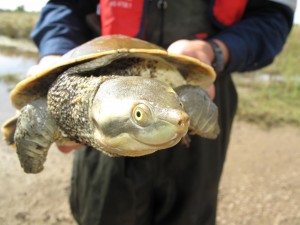 C&R has a high degree of expertise in both aquatic and terrestrial ecology. Aquatic ecological assessments are required for many Environmental Impact Statements (EISs), Environmental Management Plans, and long-term stream health monitoring programs. Our highly qualified staff provide a wide range of aquatic fauna surveying techniques, including AusRivAS (for macroinvertebrates), netting, visual censuses (via both SCUBA and snorkel) and electrofishing, which is extremely effective for surveying fish populations in freshwater systems. C&R’s ecology team also have experience in providing clients with design and support for constructed wetlands and lakes in tropical areas. Contact Matt Knott for a discussion of the aquatic ecology services we can offer to suit your requirements.
C&R has a high degree of expertise in both aquatic and terrestrial ecology. Aquatic ecological assessments are required for many Environmental Impact Statements (EISs), Environmental Management Plans, and long-term stream health monitoring programs. Our highly qualified staff provide a wide range of aquatic fauna surveying techniques, including AusRivAS (for macroinvertebrates), netting, visual censuses (via both SCUBA and snorkel) and electrofishing, which is extremely effective for surveying fish populations in freshwater systems. C&R’s ecology team also have experience in providing clients with design and support for constructed wetlands and lakes in tropical areas. Contact Matt Knott for a discussion of the aquatic ecology services we can offer to suit your requirements.
Terrestrial ecological assessments of flora and fauna at C&R are underpinned by our extensive experience in vegetation and soil type distribution in the seasonally arid tropics, allowing us to provide unique insights into typical flora assessments, including rehabilitation advice. C&R is accredited as a Certified Regional Ecosystem Assessor, giving our clients the confidence that specific ecological needs are well understood and managed. We have also conducted numerous fauna assessments within terrestrial habitats for EISs and Environmental Management Plans, including surveys of birds, reptiles, mammals and amphibians using various best practice scientific methods. Our senior vegetation specialist, Ben Cuff is available to field any inquiries you have regarding terrestrial ecology.
Receiving Environment Monitoring Programs (REMPs)
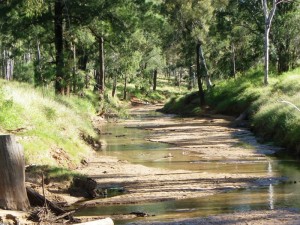 C&R are contracted by several mines throughout central and northern Queensland to undertake twice yearly monitoring of water quality, sediment quality, habitat condition and macroinvertebrate communities within their receiving environments. A requirement of Environmental Authorities (EAs) since late 2009, REMPs are a useful tool for monitoring changes in stream condition from potential impacts caused by releases of mine affected water. C&R’s expert personnel employ best practice methods (including ANZECC 2000, QWQG 2009 and AusRivAS) to ensure each REMP provides representative site specific information required to assess the background environment.
C&R are contracted by several mines throughout central and northern Queensland to undertake twice yearly monitoring of water quality, sediment quality, habitat condition and macroinvertebrate communities within their receiving environments. A requirement of Environmental Authorities (EAs) since late 2009, REMPs are a useful tool for monitoring changes in stream condition from potential impacts caused by releases of mine affected water. C&R’s expert personnel employ best practice methods (including ANZECC 2000, QWQG 2009 and AusRivAS) to ensure each REMP provides representative site specific information required to assess the background environment.
Lady Musgrave Cruises: Reef Health Monitoring Plan
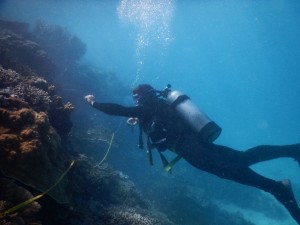 C&R undertook the monitoring, assessment and reporting required under the Reef Health Monitoring Plan (RHMP) for the tourist pontoon at Lady Musgrave Island. This included biannual monitoring of water quality, sediment quality, and coral health and community structure. The coral was assessed by scuba survey along transects, with data collected for coral form, percent coverage, bleaching, evidence of damage from disease, and number of crown-of-thorns starfish (COTS) and Drupella species. We then provided our client with an integrated analysis, giving an appraisal of potential impacts, coral health and site compliance.
C&R undertook the monitoring, assessment and reporting required under the Reef Health Monitoring Plan (RHMP) for the tourist pontoon at Lady Musgrave Island. This included biannual monitoring of water quality, sediment quality, and coral health and community structure. The coral was assessed by scuba survey along transects, with data collected for coral form, percent coverage, bleaching, evidence of damage from disease, and number of crown-of-thorns starfish (COTS) and Drupella species. We then provided our client with an integrated analysis, giving an appraisal of potential impacts, coral health and site compliance.
Potential impacts from continued releases to a typically, seasonally dry creek
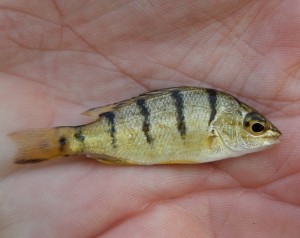 C&R are currently contracted to undertake a long term monitoring program to determine if any potentially detrimental impacts are occurring from historic releases of extracted groundwater by a mine site into a typically seasonally dry creek within the Lake Eyre Basin. The remote location of this project requires the C&R freshwater ecology team to be highly organised and mobile as timing is important. Twice yearly, C&R assess the habitat condition, water quality, sediment quality, macroinvertebrate communities and fish communities of the receiving environment. This monitoring program has been in place for over six years and provides a history of potential changes within the aquatic environment from continued releases.
C&R are currently contracted to undertake a long term monitoring program to determine if any potentially detrimental impacts are occurring from historic releases of extracted groundwater by a mine site into a typically seasonally dry creek within the Lake Eyre Basin. The remote location of this project requires the C&R freshwater ecology team to be highly organised and mobile as timing is important. Twice yearly, C&R assess the habitat condition, water quality, sediment quality, macroinvertebrate communities and fish communities of the receiving environment. This monitoring program has been in place for over six years and provides a history of potential changes within the aquatic environment from continued releases.
Terrestrial Flora and Fauna EIS – Sand Extraction
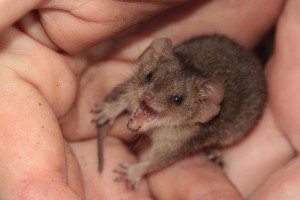 C&R undertook a detailed flora and fauna assessment of a proposed thirty-year sand extraction site located in an environmentally sensitive and significant area, adjacent to the Great Barrier Reef Marine Park and World Heritage Area, RAMSAR wetlands and a national park. This project involved a detailed review of existing literature and data, extensive field investigations (including vegetation and habitat assessments, fauna surveys targeting threatened species and GIS mapping) as well as the compilation and preparation of data, reports and resultant management plans. These included detailed environmental management plans, environmental monitoring program, operational management plans and rehabilitation plans.
C&R undertook a detailed flora and fauna assessment of a proposed thirty-year sand extraction site located in an environmentally sensitive and significant area, adjacent to the Great Barrier Reef Marine Park and World Heritage Area, RAMSAR wetlands and a national park. This project involved a detailed review of existing literature and data, extensive field investigations (including vegetation and habitat assessments, fauna surveys targeting threatened species and GIS mapping) as well as the compilation and preparation of data, reports and resultant management plans. These included detailed environmental management plans, environmental monitoring program, operational management plans and rehabilitation plans.
Rehabilitation Success Criteria and Management Plans
 C&R have a highly skilled rehabilitation management team comprised of several extensively experienced personnel, including a highly reputed botanist. In this role C&R has undertaken several rehabilitation projects for coal mines within the Bowen Basin. These projects have included outlining detailed success criteria based on pre-mining landscape characteristics, determining targeted vegetation densities, spoil gradients and appropriate time frames. C&R are also able to undertake rehabilitation assessments to advise on potential measures that can be conducted to further progress rehab works.
C&R have a highly skilled rehabilitation management team comprised of several extensively experienced personnel, including a highly reputed botanist. In this role C&R has undertaken several rehabilitation projects for coal mines within the Bowen Basin. These projects have included outlining detailed success criteria based on pre-mining landscape characteristics, determining targeted vegetation densities, spoil gradients and appropriate time frames. C&R are also able to undertake rehabilitation assessments to advise on potential measures that can be conducted to further progress rehab works.
Ben Lomond Project – Mega Uranium Ltd
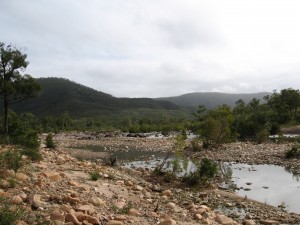 C&R performed a detailed environmental studies for a proposed uranium mine site. This investigation was part of a feasibility study to re-open the mine. C&R commenced the collation of geological, mineralogical, environmental and hydrological data and assisted the client additionally with geological exploration input. The project also included:
C&R performed a detailed environmental studies for a proposed uranium mine site. This investigation was part of a feasibility study to re-open the mine. C&R commenced the collation of geological, mineralogical, environmental and hydrological data and assisted the client additionally with geological exploration input. The project also included:
- Baseline ecological surveys of terrestrial ecosystems as well as an onsite freshwater creek;
- Aquatic ecology was performed using electrofishing techniques, while terrestrial fauna were targeted using baited traps, pitfall traps and spotlighting as well as frogs species determined through call identification techniques;
- In-field flora evaluations were performed using line transects and targeted sampling of specific areas. This was conducted to establish a whole of site flora inventory and assign regional ecosystems over the entire mine lease;
- Assessments and geological evaluations (including petrographic examinations) to determine background information of landscape factors likely to impact on or be impacted by the development of the mine; and,
- GIS mapping of all sampling locations and results.
Lihou Reef – Baseline Terrestrial and Aquatic Surveys
 The Australian Government Department of the Environment, Water, Heritage and the Arts commissioned C&R to perform a full ecological survey of corals and other benthos, coral condition and health, fish and commercially important invertebrates (e.g. trochus, holothurians and tridacnid clams) inhabiting the Lihou Reef National Nature Reserve (LRNNR), located approximately 600km east of Townsville in the Coral Sea.This project required the development and implementation of a field survey of a remote oceanic coral reef ecosystem, to monitor the recovery of reef biota to past disturbance from coral bleaching. The final report included an assessment of populations of reef organisms, comparisons to previous surveys, comparisons with other Commonwealth Reserves and localities, and management recommendations. It also included assessments and discussions of reef resilience and the use of mapping to depict spatial patterns in the data.
The Australian Government Department of the Environment, Water, Heritage and the Arts commissioned C&R to perform a full ecological survey of corals and other benthos, coral condition and health, fish and commercially important invertebrates (e.g. trochus, holothurians and tridacnid clams) inhabiting the Lihou Reef National Nature Reserve (LRNNR), located approximately 600km east of Townsville in the Coral Sea.This project required the development and implementation of a field survey of a remote oceanic coral reef ecosystem, to monitor the recovery of reef biota to past disturbance from coral bleaching. The final report included an assessment of populations of reef organisms, comparisons to previous surveys, comparisons with other Commonwealth Reserves and localities, and management recommendations. It also included assessments and discussions of reef resilience and the use of mapping to depict spatial patterns in the data.
In addition, a terrestrial survey was also conducted by C&R to provide the first baseline data on vegetation and terrestrial invertebrates present on the LRNNR cays for future assessments of condition. This was completed in accordance with the recommended methods and standards of the Queensland Herbarium. Incidental observations of seabird species and breeding activity and marine turtle nesting were also made.
